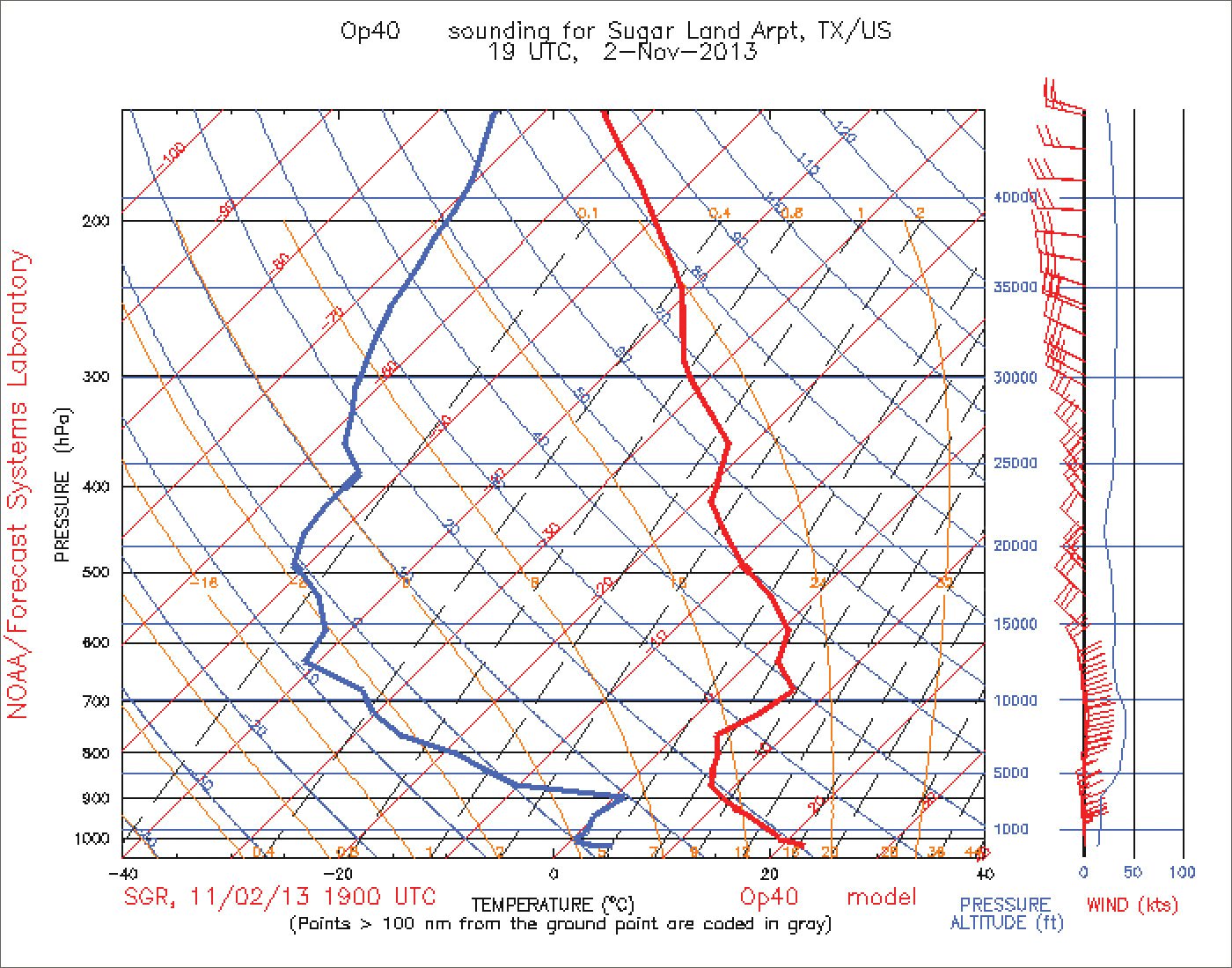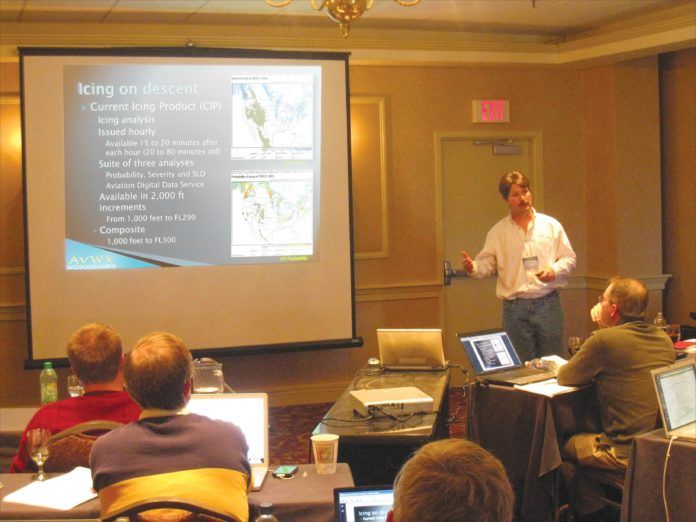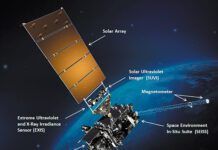There are many tidbits of wisdom we learn during our lives. One of those I recall hearing a long time ago was, “If you like sausage, never go to a sausage factory.” Seeing the product being produced from the various raw ingredients might keep you from ever eating it again. But, what would happen if you had no choice but to eat sausage? Would you still stay away from the factory? Or would you want to learn all you could about sausage and sausage making?

One undeniable fact is that airplanes and weather go hand in hand. We as pilots can learn everything possible about the regs, aerodynamics and navigation, but the fact is that the minute our planes start moving, they are in the weather. Weather is the sausage that we pilots have to eat. We have no choice. Having earned various licenses and ratings, along the way I had to decide if I wanted to visit the sausage factory or not.
Two Days of Gold
This past fall I had the chance to attend one of the Beyond the Weather Briefing workshops offered by CFI, former NWS meteorologist and former IFR contributing editor Scott Dennstaedt (avwxworkshops.com), held in Sugarland Texas. The visit to the factory was worth its weight in gold.
The workshop consisted of a two day presentation on the NWS products we know and love (or not). We learned how they are made, their value, and what they don’t cover. It explains that a lot of what we know about the weather is based upon simplifications and outright misconceptions that propagate in our hangar flying. Scott states that the purpose of the workshop is not to make us forecasters, but to make us aficionados and to know when we are being fed something that may not be good for us.
Scott begins by reinforcing our duties as pilots to be informed. Then he gives a great review of the basics of atmospheric physics which dictate the development of all the weather we encounter. A big part of this review covers the characteristics of buoyancy in the atmosphere. Many times as pilots we get fixated with the horizontal components of the atmosphere (wind, fronts, etc.) but fail to realize that most of what we encounter develops as a result of the vertical dimension (buoyancy, subsidence). Also, he talks about the role that water vapor plays in this vertical dimension. With the ground rules set on the atmosphere and its principles, it’s then off to the discussion of how pilots can go beyond the basics to examine the flight environment.

We next examined the rawinsonde observations taken twice daily all over the world, as well as the computer modeling that results. Emphasis is made on the presentation of this data through thermodynamic diagrams known as Skew-T log-p diagram (aka Skew-Ts).
Skew-T
I had my first introduction to these diagrams a number of years ago in IFR Magazine through a series by Scott. The live presentation revealed many hidden gems in the diagrams (icing, turbulence, etc.). The Skew-T also visually shows many of the indices that concern pilots like the Lifted Index and the Convective Available Potential Energy and others, plus showing ways to predict/suspect cloud coverage. I came to appreciate that if there were only one piece of weather data available, I’d want it to be the Skew-T.
The workshop then showed the interaction of the upper levels of the atmosphere with the lower and the use of upper level charts to help explain the sometimes mystical happenings at the lower levels. We also reviewed current and forecast convective and icing products. We all had a lot of questions that Scott expertly fielded.
Application
The second day of the workshop brought the first day into practice. Five real-world incidents were presented and the class was encouraged to delve beyond the basic weather products to see what happened and why. It was truly eye-opening to see how the basic information that we typically use to plan and execute flights sometimes falls short. Many times we as pilots fault the forecasts for these failures without understanding the built-in limits of the products we use.
The scenarios also allowed us to begin thinking outside the box to put together the elements to understand both what happened and how we could better plan future flights.
It was a tremendous experience to attend Scott Dennstaedt’s Beyond the Weather Brief workshop. He clearly knew the material well enough to explain it as simply as possible. (My personal benchmark for someone’s knowledge of a subject is in how simply they can explain it.) I realized that all my previous weather training had been insufficient, with the possible exception of
Dispatcher training. Most of what we learn for our pilot ratings is usually just enough to make us sufficiently smug to think we have a grasp on weather—or to recognize our ignorance and just trust in luck that everything will work out.
As a fellow sausage eater, I am glad I attended the workshop. I certainly didn’t learn to make the sausage, but I did learn to appreciate and understand it better. Perhaps a factory tour isn’t such a bad idea after all.
Howard Drabek, a Catholic priest in League City, Texas, holds commercial, instrument and multi-engine certificates and is a licensed dispatcher and advanced ground instructor. Now he can add weather aficionado to the list.





